10 Climate Change Impacts That Will Affect Us All
And how to protect yourself from them.

As global greenhouse gases are projected to hit a new high for 2019, Petteri Taalas of the World Meteorological Organization recently declared, “Things are getting worse.” A 2019 poll found that only 24 percent of U.S. respondents believed climate change would have a great deal of impact on their lives; 31 percent believed it would have a fair amount of impact.
Different regions of the country will be affected in different ways, some more than others. But there are certain impacts that will probably affect every American’s way of life. Here are 10 of them.
1. Damage to your home
Floods, the most common and deadly natural disasters in the U.S., will likely be exacerbated and intensified by sea level rise and extreme weather. Heavy precipitation is projected to increase throughout the century to potentially three times the historical average. A 2018 study found that over 40 million Americans are at risk of flooding from rivers, and over 8.6 million people live in areas that already experience coastal flooding from storm surges during hurricanes. FEMA estimated that even one inch of floodwater in an average-sized home could cost homeowners almost $27,000 in damages.
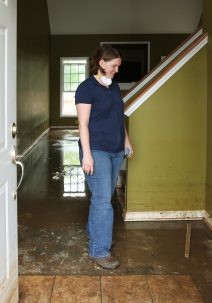
In September, Adam Sobel, founding director of Columbia University’s Initiative on Extreme Weather and Climate, testified before the House Science, Space and Technology Committee. He asserted that scientists have strong evidence that global warming will increase the frequency or intensity of heavy rain events, and coastal flooding due to hurricane storm surge is also worsening because of sea level rise and increased precipitation.
In addition, he said, the frequency and intensity of droughts and wildfires are on the rise. While no state is immune to wildfires, 13 states in the West are considered susceptible to the most severe wildfire damage, with California having the most acres burned in 2018. A national analysis found that 775,654 homes are at extreme risk of wildfire in these 13 states. But even if homes do not burn to the ground, they may suffer smoke and fire damage, as well as water damage and flooding from fire fighting efforts.
How to protect yourself
Flooding:
- Apply sealants and coatings to prevent floodwaters from entering your house
- Install a sump pump
- Keep your gutters and drains clear
- Where flooding occurs regularly, raise your home up on stilts or piles
Wildfires:
- Remove dry vegetation around the house
- When replacing a roof, opt for tile or metal
- Take all evacuation warnings seriously and have an emergency supply kit ready to go
2. More expensive home insurance
As insurance companies pay out huge amounts to homeowners whose houses have been damaged by climate change impacts, many are raising premiums to offset their costs. Home insurance rates increased more than 50 percent between 2005 and 2015.
In high-risk areas, premiums and deductibles may rise, coverage may be more limited, and insurance could ultimately become unaffordable or unavailable for some, especially in climate-vulnerable areas. For Connecticut homeowners, insurance rates have gone up 35 percent in the last 10 years; for homeowners with property along the coast, rates have gone up by over 50 percent. In 2016, California insurance companies would not renew over 10,000 policies for homes in high-risk areas. (Recently, however, the state issued a one-year moratorium preventing insurers from dropping customers who live in areas at risk from wildfire.) Travelers Insurance Company now requires separate deductibles in areas where hurricanes and tornadoes are more common.
Moreover, standard homeowners’ insurance does not cover flooding, so homeowners must buy private insurance or sign up for the National Flood Insurance Program run by FEMA. Due to billions of dollars in payouts for Hurricanes Katrina, Harvey, Irma, Maria and Sandy, however, NFIP is $20.5 billion in debt. In October, FEMA announced that rates would rise 11.3 percent in April 2020, and will be further restructured in October 2021.
How to protect yourself
- When choosing a home, factor in climate risks
- Check FEMA flood maps (even though almost 60 percent are out of date)
- Understand your insurance coverage and needs
- Shop around for your insurance policy
- Raise your deductible for lower monthly payments
- Make your home more disaster-resistant
3. Outdoor work could become unbearable
With continued global warming, heat waves are expected to increase in frequency, duration and intensity. Jane Baldwin, a postdoctoral research scientist at Lamont-Doherty Earth Observatory, found that compound heat waves—heat waves that occur in sequence, one after the other—will also increase, making recovery from heat waves more difficult.

People who work outdoors, such as construction workers, miners, firefighters and agricultural workers, will be most affected by increasing temperatures. Florida, for example, has one of the highest rates of heat-related hospitalizations in the U.S. This summer during a heat wave, the majority of heat-related visits to emergency rooms in Virginia were made by people aged 29-40, 70 percent of whom were men. Indoor workers in warehouses and steel plants can also be affected by excessive heat.
One study suggested that outdoor workers should begin their shifts earlier in the day, but if global warming continues at the current pace, by 2100, they would have to start working four to six hours before dawn. Currently, there are no federal laws that protect workers from heat stress, but in July, a bill was introduced into the House of Representatives that would require the Occupational Safety and Health Administration to establish standards to protect those working in the heat.
How to protect yourself
- Take frequent shade and water breaks
- Use a damp rag to keep cool
- Wear light-colored clothing and a hat
- Know the symptoms of heat exhaustion and heat stroke
4. Higher electric bills and more blackouts
As temperatures rise, people will need to stay cool for health and comfort reasons. Climate Central analyzed 244 cities in the U.S. and determined that 93 percent experienced an increase in the number of days that required extra cooling to remain comfortable. As we rely more heavily on air conditioners and fans, electricity bills will get higher.
The increased demand for electricity, especially during peak periods, can also over-tax the electrical grid, triggering brownouts or blackouts. Extreme weather, such as hurricanes, heat waves or snowstorms, can cause power outages too.

Between the mid-1980s and 2012, there was a ten-fold increase in power outages, 80 percent of which were caused by weather.
As wildfires plague California, Pacific Gas & Electric has been preemptively shutting down power to avoid the possibility of sparking fires in the dry, windy conditions. Millions lost power during this year’s blackouts. Pre-emptive blackouts could become a common occurrence.
Brownouts or blackouts can also result if hydropower plants have less water to draw from in rivers and lakes, and if water becomes too warm to cool nuclear or coal power plants.
How to protect yourself
- Find greener ways to stay cool
- Install a programmable thermostat and set the temperature higher
- Run your appliances at night
- During a blackout, fill the bathtub so you have water to flush toilets; keep freezers and refrigerators closed
- If the power goes out, unplug appliances and electronics to avoid damage from electrical surges
- Don’t run generators inside the garage or near open windows, to avoid carbon monoxide poisoning
5. Rising taxes
Municipalities are recognizing the need to make their communities more resilient in the face of climate change impacts. Although measures such as building seawalls or hardening infrastructure are hugely expensive, the National Climate Assessment determined that resiliency measures save money in the long run — for example, by reducing coastal property damage to about $800 billion from a projected $3.5 trillion. Paying for mitigation and adaptation measures, however, will likely have to be funded through higher property taxes or “resilience fees.”
Grand Rapids, Michigan had problems with flooding and aging stormwater infrastructure. In 2014, the residents rejected a 13.3 percent income tax cut in order to implement green infrastructure measures that absorb runoff and reduce flooding on streets.
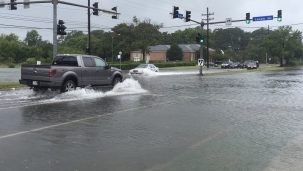
In 2018, Norfolk, VA, which is surrounded by water and vulnerable to sea level rise, approved a $0.10 increase to the real estate tax rate, which will go towards citywide resiliency plans to address flooding. And in the wake of California’s recent wildfires, Marin County is proposing a $0.10 per square foot parcel tax on property owners across the county to fund wildfire prevention.
How to protect yourself
- See if you qualify for a tax rebate or credit for renewable energy and/or energy efficiency
- Check to see if your state gives tax exemptions for seniors, veterans, or the disabled
6. More allergies and other health risks
Warmer temperatures cause the pollen season to be longer and worsen air quality, both of which can result in more allergy and asthma attacks. Ground-level ozone, a major component of smog, which increases when temperatures warm, can also cause coughing, chest tightness or pain, decrease lung function and worsen asthma and other chronic lung diseases.
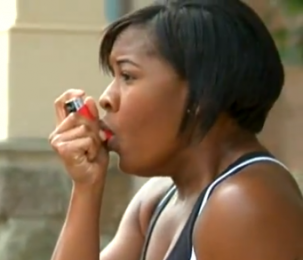
In addition, after floods or storms, damp buildings may foster mold growth, which has been linked to allergies and other lung diseases.
With rising temperatures, more people will suffer heat cramps, heat exhaustion, hyperthermia (high body temperature) and heat stroke as days that are unusually hot for the season hamper the body’s ability to regulate its temperature. Prolonged exposure to heat can exacerbate cardiovascular, respiratory and kidney diseases, diabetes, and increase the chance for strokes.
Older adults, pregnant women, and children are particularly vulnerable to excess heat. A 2018 paper, written by Madeline Thomson while she was a senior researcher at the Earth Institute’s International Research Institute for Climate and Society, called attention to the fact that children and infants are more vulnerable to dehydration and heat stress, as well as to respiratory disease, allergies and fever during heat waves and to the need for adults to protect them.
As the climate changes, disease-carrying mosquitoes are extending their range, bringing diseases such as malaria, dengue fever, chikungunya and West Nile virus farther north than they’ve ever been. In the summer of 2013, the Aedes aegypti mosquito, usually found in Texas and the southeastern U.S., suddenly appeared in California as far north as San Francisco — fortunately, none of the tested mosquitoes carried dengue or yellow fever. One study projects that Aedes aegypti could reach as far north as Chicago by 2050.
Heat waves, natural disasters, and the disruption in lives they cause can also aggravate mental health. During one recent California wildfire, suicidal and traumatized people flooded emergency rooms.
How to protect yourself
- When pollen counts are high or air quality is bad, stay indoors
- During a heat wave, limit outside activity during the hottest hours
- Stay hydrated
- Use insect repellent
- Understand how climate impacts can affect your children and take precautions for them
7. Food will be more expensive and variety may suffer
In the last 20 years, food prices have risen about 2.6 percent each year, and the USDA expects that food prices will continue to rise. While there are several reasons for higher food prices, climate change is a major factor. Extreme weather affects livestock and crops, and droughts can have impacts on the stability and price of food. New York apple farmers, for example, are facing warmer winters and extreme weather, which can wipe out harvests. They are trying to save their apples with new irrigation systems and wind machines that blow warm air during cold spells, but eventually these added costs will be reflected in the price of apples.
As temperatures warm and precipitation increases, more pathogens will thrive and affect plant health; in addition, more food will spoil. And because food is a globally traded commodity today, climate events in one region can raise prices and cause shortages across the globe. For example, a drought in Brazil in 2013 and 2014 caused Arabica coffee prices to double.
Michael Puma, director of the Earth Institute’s Center for Climate Systems Research, studies global food security, especially how susceptible the global network of food trade is to natural (e.g., megadroughts, volcanic eruptions) and manmade (e.g., wars, trade restrictions) disturbances. He and his colleagues are building quantitative economic models to examine vulnerabilities in the food system under different scenarios; they will use the tool to explore how altering certain policies might reduce the vulnerabilities of the food system to disruptions.
Three-quarters of our crops rely on insects for pollination and scientists believe 41 percent of insect species are threatened with extinction. While habitat loss is the major reason, climate change also plays a large part. If we lose pollinators, that could mean losing some of the crops and varieties they pollinate.
How to protect yourself
- To save money, cook at home more often and avoid purchasing prepared foods
- Don’t waste food
- Buy in bulk
- Eat less meat
8. Water quality could suffer
Intense storms and heavy precipitation can result in the contamination of water resources. In cities, runoff picks up pollutants from the streets, and can overflow sewage systems, allowing untreated sewage to enter drinking water supplies.
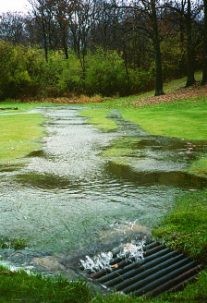
In rural areas, runoff transports animal waste, pesticides and chemical fertilizer, and can enter drinking or recreational waters. Polluted drinking water can cause diarrhea, Legionnaires’ disease, and cholera; it can also cause eye, ear and skin infections. In some low-lying coastal areas, sea level rise could enable saltwater to enter groundwater drinking water supplies. And in areas suffering from drought, contaminants become more concentrated as water supplies decrease. In addition, algal blooms thrive in warm temperatures and can contaminate drinking water. In 2014, residents of Toledo, Ohio had to drink bottled water for three days because their water supply was polluted with cyanobacteria toxins.
The Earth Institute’s Columbia Water Center studies the state of fresh water availability in the face of climate change, and the water needs of food production, energy generation and ecosystems. It aims to provide “sustainable models of water management and development” to apply on local, regional and global levels.
How to protect yourself
- Don’t use water you suspect is contaminated to wash dishes, brush teeth, wash or prepare food, make ice, wash hands or make baby formula
- Keep bottled water on hand
- Decrease your household water use, especially during droughts
- Heed government precautions when drinking water is found to be contaminated and boil your water
9. Outdoor exercise and recreational sports will become more difficult
Reduced snowfall and early snowmelt in the spring will have an impact on skiing, snowmobiling and other winter sports. Less water in lakes and rivers could also affect boating and fishing during summer.
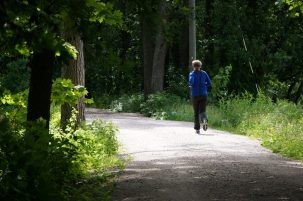
Hotter temperatures, especially in the South and Southwest, will make summer activities like running, biking, hiking and fishing less comfortable and potentially dangerous to your health.
How to protect yourself
- Shorten your outdoor workout
- Substitute indoor activities when temperatures are excessively hot
- Plan outdoor exercise for early or late in the day
- Choose shady routes if possible
- Stay hydrated
- Wear loose, light-colored clothing
- Keep salty or juicy snacks on hand
- Know the signs of heat cramps, heat exhaustion and heatstroke
10. Disruptions in travel
As temperatures rise, it may get too hot for some planes to fly. In 2015, Radley Horton, associate research professor at Lamont-Doherty Earth Observatory, and then Ph.D. student Ethan Coffel published a study calculating how extreme heat could restrict the takeoff weight of airplanes. Hotter air is less dense, so planes get less lift under their wings and engines produce less power. Airlines may be forced to bump passengers or leave luggage behind to lighten their loads. This concern is one reason why long-distance flights from the Middle East leave at night; the practice could become standard for the U.S. as well.
Flights can be disrupted due to flooding because many airports are located on low-lying land.
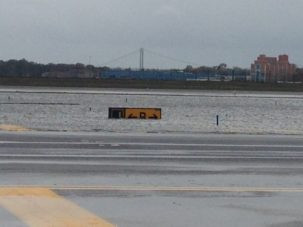
Superstorm Sandy in 2012 flooded LaGuardia Airport for three days. One runway in Northern Canada had to be repaved because the permafrost on which it was built began melting.
Once in the air, you may experience more turbulence. Stronger winds create more shear (a difference in wind speed over a short distance) in the atmosphere, which results in turbulence. And distant storms can create waves in the atmosphere that cause turbulence hundreds of miles away.
Recreational travel could be upended as climate change impacts many popular destinations. Sea level rise, storm surge and erosion are affecting Waikiki Beach in Hawaii, Miami Beach in Florida, and Copacabana in Rio de Janeiro. Along Florida’s southwest and Gulf coasts, toxic algae blooms have killed fish and turtles, sending the stench and toxins into the air, and making beaches unpleasant and unhealthy.

In the U.S., Montana’s Glacier National Park is losing its glaciers; in 1910 it had more than 100, but now fewer than two dozen remain. The Everglades are experiencing salt water intrusion from sea level rise. World heritage sites, too, are being affected by global warming impacts: The Amazon rainforest is threatened by logging and fires, the Arctic is thawing, the snows of Kilamanjaro are melting, and the Great Barrier Reef’s corals are bleaching.
How to protect yourself
- Change your travel destination
- Purchase travel insurance
- Check the weather of your travel destination
- Fly during the morning to reduce chances of thunderstorms and turbulence
- On the plane, keep your seat belt buckled as much as possible
As global temperatures continue to rise, climate change will affect our wallets, our health, our safety, and our lives. Many people are already feeling these impacts. And while there are ways to adapt on a personal level, some of these changes are going to become more severe and unavoidable over time. The best way to protect ourselves for the future is to support policies and measures that cut carbon emissions and enhance climate resilience.
